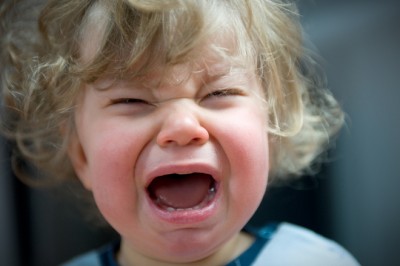How to Treat Fever Blisters in Toddlers

Fever blisters are a common problem one normally gets in childhood. It is also called Cold Sores, caused by herpes simplex virus. A typical difficulty in the problems is that blisters cannot be easily spotted, since they are tiny fluid-filled blisters. Generally, blisters appear on a toddler’s face but sometimes genital area is also affected. They can also occur again, and sporadically. They are very painful and cause a lot of difficulties in providing timely relief to the ill child.
There is no immediate treatment of fever blisters and it clears up on its own after seven to ten days. However, there are number of methods to solve the problem as it appears. Following are some of the most effective steps that you can take in timely treating fever blisters in your toddlers.
Instructions
-
1
Early Identification of Symptoms
Try to spot and identify symptoms of fever blisters in your child at very early stage. Some of these are burning, itching, tingling and redness. Your child will usually feel very uncomfortable during this stage, which can indicate towards the disease. -
2
Medication at Symptoms Stage
Symptoms are the only stage you can use many medications to treat fever blisters in your child. There are a number of prescription creams, lotions and ointments you can use to treat the disease at early stage. Generally, acyclovir and penciclovir creams are recommended for treating fever blisters in children who are at least twelve years old or above. There can be some over-the-counter products but they are not generally recommended and are not effective in the treatment. Make sure you avoid them. -
3
Other Methods of Relief
Try not to use unsafe remedies to treat your child of fever blisters, but you can do that with an advice from your doctor. For example, you can ask your doctor for use of pain relievers such as ibuprofen or acetaminophen. However, some of generally recommended home remedies are application of ice packs or cool compresses to provide immediate relief to your child.
You can apply tea bag to the blister. It provides some relief to child. You can also use witch hazel on the affected area. Also, lemon balm extract can help overcome symptoms to an extent and speed up recovery process. -
4
Precautionary Measures
After you are aware that your toddler has fever blisters, you should take some precautionary steps to avoid further complications to child and offer some immediate relief to him/her. For example, you should avoid exposing your child directly to sunlight, apply sunscreen to the affected area and prevent your child from dusty and rough conditions.
Further, keep fever blister clean and dry. There is a fair chance that the fever blister area can be infected by exposure of child to unsafe conditions. You should not touch sore areas frequently and avoid doing other things that irritate your child. Do not share the stuff in your child use with other infected or uninfected persons.







